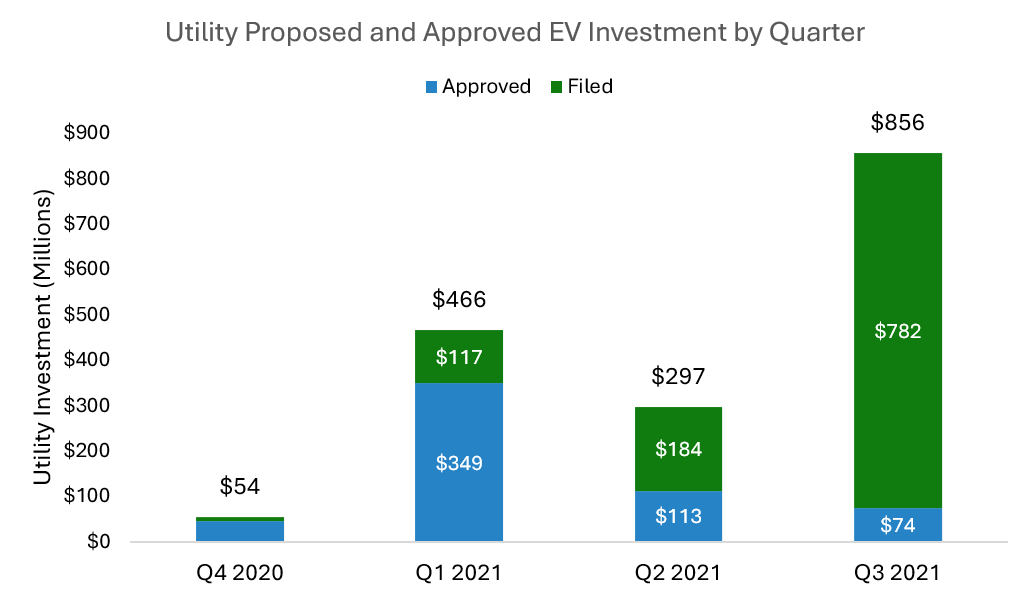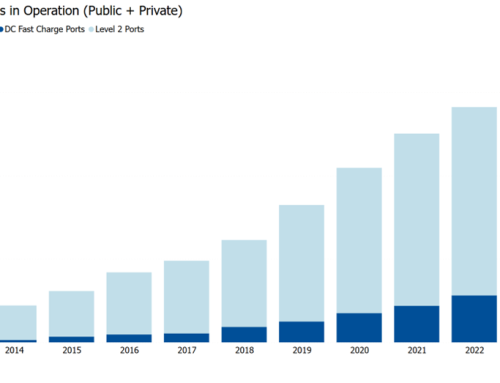
Source: EV Hub
|
We have just published our Quarterly Review of the EV Market for the third quarter (July through September of 2021). The slides cover a lot of ground and so I wanted to tell three stories buried in the numbers. But before I do, we continue to build out the slide deck to provide more context on what is going on. My favorite new slide is a summary of all the players that are investing in EVs in the United States. Given the range of funding that is pouring into EVs currently and all the moving numbers, this slide lays out all the main sources of funding and puts the approved and proposed investment from the federal government into some perspective. It is, if one can say this about a PowerPoint slide, grounding. Now, let’s look at three interesting stories in the data. The first is sales. More than 169,000 EVs were sold in Q3, trailing the record set in Q2 by less than 1,000 units. EV’s share of the market rose by more than a full percentage point, capturing just over five percent of the light duty vehicle market – the first time we have seen this benchmark in a quarter. Compared to 2020, Q3 sales were up 97 percent, meaning they effectively doubled. Tesla continues to dominate, capturing 50 percent of the EV market in Q3 led by the Model 3 and Model Y, the two bestselling EVs of the quarter. The even bigger story of Q3 though is the burst of activity from utilities. Across five states, more than $781 million of new EV programs were proposed. That figure is more than twice the amount proposed during Q1 and Q2 combined. The big cash was across three programs, one in Florida and two in Massachusetts. Here’s the long and short of the three programs: National Grid (MA) – $278 million + Proposed 4-year Phase III EV Program (docket 21-91) + Could support nearly 400 DCFC and more than 31,200 Level 2 ports + Make-ready support and EVSE incentives for public, workplace, residential, and fleet chargers + 20% of public and workplace chargers targeted for underserved communities and the utility may own chargers in environmental justice communities + Includes rebates for ~300 school buses for schools operating in environmental justice communities Florida Power & Light Company (FL) – $205 million + Proposed 4-year program for utility-owned DCFC and Level 2 chargers (docket 20210015-EI) + If approved, would be largest utility-owned charging program, by dollar amount + Program costs partially offset by program revenues, including FPL’s UEV tariff, for DCFC, and fixed monthly fees for residential and commercial programs Eversource (MA) – $193 million + Proposed 4-year Phase II EV Program (docket 21-90) + Could support 150 DCFC and nearly 22,000 Level 2 ports + Includes utility-owned DCFC program and turnkey residential Level 2 program for environmental justice communities + Includes $3 million to support charging infrastructure for up to 120 MDHD vehicles in environmental justice communities Then for good measure a further $84 million was proposed in Nevada, which includes 51 percent of planned expenditures in underserved communities. Alongside the proposed programs, there was a single $74 million program approved in Connecticut to support 581 DCFC and 62,000 L2 ports including 10 percent of Multi Unit Dwelling (MUD) chargers in underserved communities. Overall, programs approved and proposed during Q3 2021 could support more than 1,250 DCFC and more than 118,200 Level 2 ports. The third big story was industry investment. In July, Stellantis announced plans to invest more than $35 billion in EVs, keeping pace with investments announced by GM in June and Ford in May. The Detroit Three have now collectively committed more than $100 billion to electrification. Alongside Stellantis, there were also announcements from several other automakers including Toyota, Daimler, and Rivian. There are of course other stories from the quarter including the Illinois Climate and Equitable Jobs Act and developments in the two federal bills which took shape in Q3. Not to mention, we inched closer to the highly anticipated release of Rivian’s electric pick-up truck and the 500-mile Lucid Air. All in all it was a big, bold quarter for electric vehicles. |


